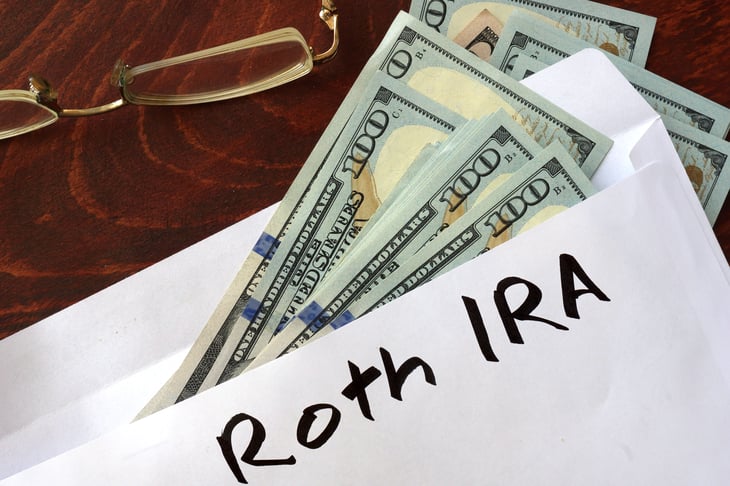
Available as traditional or Roth accounts, individual retirement accounts (IRAs) are valuable tools for retirement savings. They offer tax benefits in exchange for putting aside money for your golden years.
However, contributions to IRAs are capped at $6,000 per year for most people, and that can make it difficult to amass the $1 million some people suggest is needed for retirement.
Still, you can maximize your IRA contributions – both this year and over time – by using these tips.
1. Understand your IRA options

Start by determining whether you are eligible to open a specialized IRA with a higher contribution limit.
“Self-employed people can actually contribute to a SEP IRA,” says Rafael Rubio, president of Stable Retirement Planners in Southfield, Michigan.
Simplified Employee Pension (SEP) plans, also known as SEP IRAs, allow workers to save 25% of their compensation, up to $58,000 in 2021, in a tax-advantaged account.
2. Don’t miss out on catch-up contributions

Once you hit a certain age, you’re eligible to make catch-up contributions to traditional and Roth IRAs.
“If you’re 50, you can contribute another $1,000 a year,” explains Edward Gottfried, director of product management for Betterment for Business, an online platform offering 401(k) administration services.
That means everyone age 50 and older can contribute a total of $7,000 to their IRA for 2021 and 2022.
3. Take advantage of a spousal IRA

Normally, you need to earn taxable income to contribute to an IRA. However, there is an exception for spouses. A non-working spouse can set up and contribute to an IRA so long as their husband or wife has taxable income.
“That’s contingent upon you filing your taxes jointly,” Gottfried notes.
If you file your taxes separately, you’ll miss out on this opportunity. The other caveat is that total IRA contributions can’t exceed the taxable income reported on your joint return.
4. Make regular contributions throughout the year

If you wait for a year-end bonus to make your annual IRA contribution, you could be shortchanging yourself.
“Generally, the advice we give is that people make small monthly contributions,” Gottfried says. Known as dollar-cost averaging, this practice makes savings a habit and can lead to more efficient investments.
What’s more, it may help your IRA grow faster.
“It makes sure each dollar spends as much time as possible in the market,” according to Gottfried.
5. Start contributing as early as possible

It’s never too early to begin saving for retirement. That means opening an IRA as soon as you’re able as well as beginning deposits as early in the year as possible.
Anyone, regardless of their age, can open an IRA so long as they have taxable income. As a result, some teens can begin saving for retirement.
Once you have your account open, you can make annual IRA contributions as late as tax day — usually April 15 — of the following year. But waiting that long could cost you more than 15 months of compounding gains in the market. If stocks perform strongly during those 15 months, missing out on those gains could be an expensive mistake.
6. Consider a Roth conversion

Both traditional and Roth IRAs offer tax advantages, but they differ. A traditional account offers an immediate tax deduction on contributions and then taxes withdrawals in retirement as regular income. Meanwhile, there is no tax deduction for contributions to a Roth account, but the money is tax-free in retirement.
“Everyone is anticipating that taxes are going to go up,” Rubio says. That means it might be better to pay taxes now rather than later.
If you have a traditional IRA, you can convert it to a Roth account. Income tax must be paid on the converted amount, but you could save money on taxes in the long run with this strategy. Talk to a financial professional to see if it makes sense for you.
7. Invest for the long term

Money in an IRA should adhere to the “set it and forget it” principle. Moving it around frequently could rack up fees, and selling off investments during a down market simply means you’ll be locking in losses.
Determine the appropriate investment strategy for your goals and risk tolerance and then stick to it. Remember that you may have to ride out some short-term bumps in the market to maximize your long-term gains.
8. Talk to a financial adviser

You don’t need a financial adviser to open and invest in an IRA. “You can always try to invest it on your own,” Rubio says.
For savvy investors and those with the time and inclination to research investment choices, managing an IRA can be a viable option. For others, using a professional can save time and may result in greater returns.
If you aren’t already working with someone, head to the Money Talks News Solutions Center to find a financial adviser near you in just a few minutes.





Add a Comment
Our Policy: We welcome relevant and respectful comments in order to foster healthy and informative discussions. All other comments may be removed. Comments with links are automatically held for moderation.